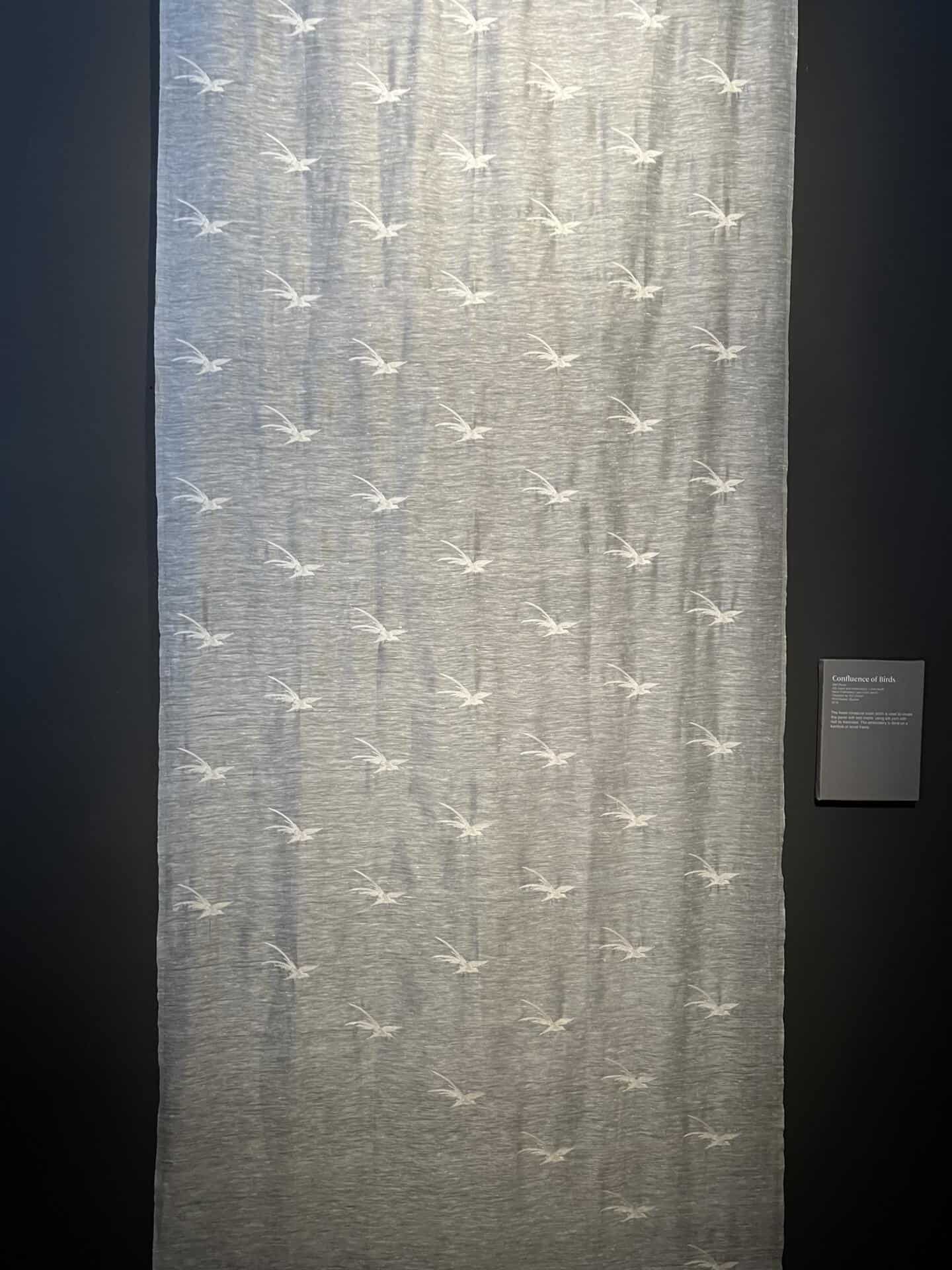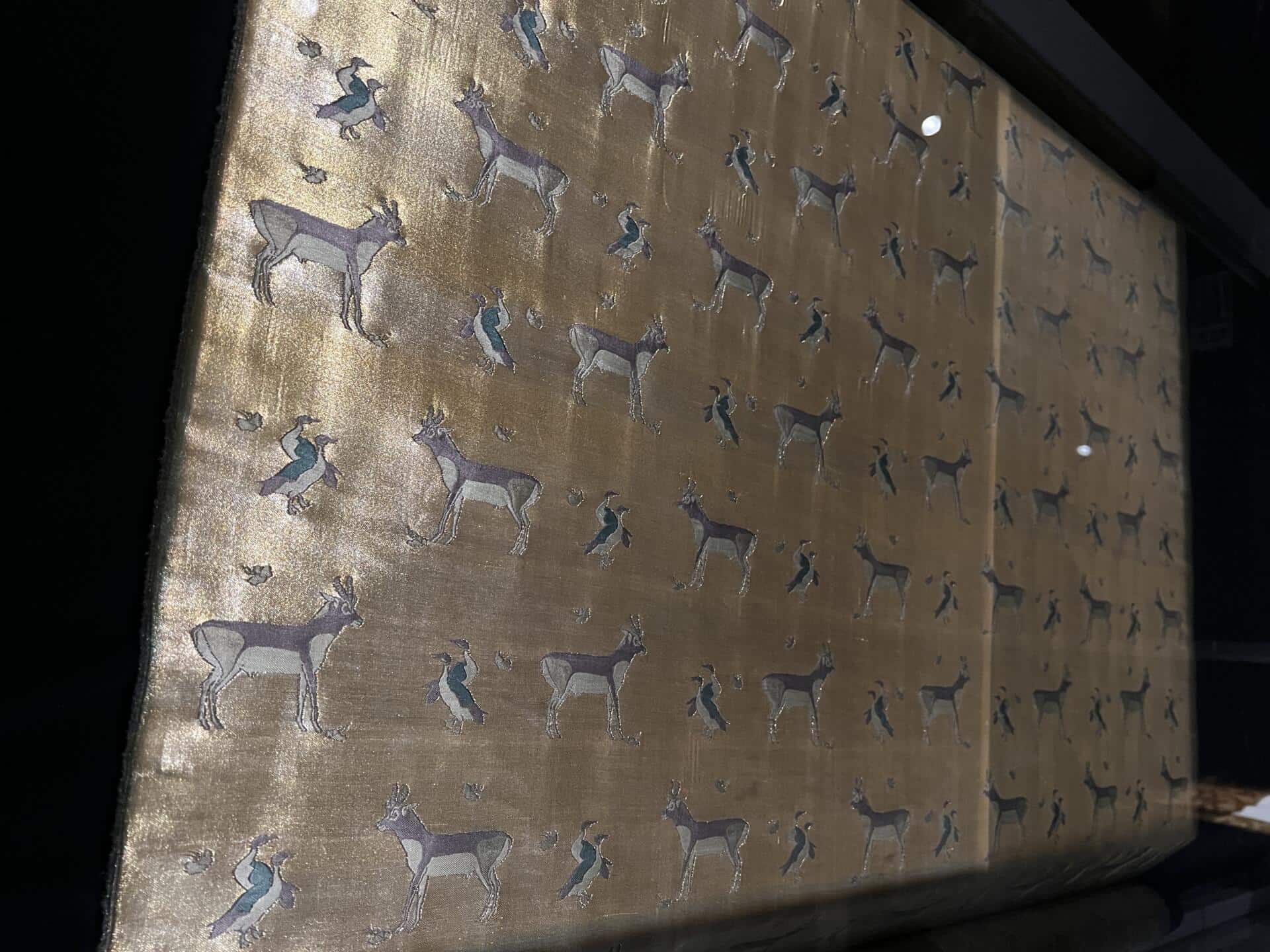HANDLOOM ARTS
The exhibit highlights an array of textile techniques as well as a wide range of yarn
New Delhi | Curation of over 100 Indian textiles at ‘Sutr Santati’ speaks the language of the hand and the yarn

As you walk through the Sutr Santati exhibit at the National Museum, there will come a point (if you are a textile lover, that is) when you will sigh. The sigh is for the beauty that is all around you and a tinge of regret for something you cannot name.
Indians of a certain ilk have a deep and profound love for our handwoven textiles that is hard to articulate. There is pride, nostalgia and a smidgeon of regret. Regret that such textiles, that were once commonplace, and used as functional clothes, in this India that is Bharat, are now museum pieces. Nostalgia for a time when every Indian wore hand-woven clothes not as a matter of pride but without thinking– because that was what you wore. And pride because what you will see at the Sutr Santati exhibit is really quite wonderful.
Conceived and curated by Lavina Baldota of the Abheraj Baldota Foundation, the exhibit took two years to put together. There are over 100 beautifully lit textiles by 75 artisans, craftspeople, designers, and artists. They hang silently, speaking the language of the hand and the yarn.
For those who think handwoven is one process, this exhibit highlights the dizzying array of ways in which we manipulate textiles in this land. There is embroidery, resist-dyeing, printing, painting and appliqué among others. The yarn itself ranges from local varieties such as Kala cotton of Gujarat to Kandu cotton of Karnataka. There is Muga and Eri silk from the Northeast as well as commissions that use camel and sheep wool, goat and yak hair. And then there is Baldota herself, a textile-lover of indeterminate age who spends day after day, leading small groups or individuals through the exhibit.
When one person (from one family) puts together an exhibit such as this, it is natural to wonder: why is she doing it? What’s in it for her? Clearly some name and fame. Clearly she loves textiles and collects them with relish. Clearly she has the clout and the means to convince a wide network of people in the textile trade to take on commissions from her. But time and again, during walkthroughs with Baldota, the words that she repeats are “relevance and continuity.” Here is a woman who wants Indian textiles to adapt and flourish. Like many before her, she wants to show the world what is possible, to stretch the canvas. Her Whatsapp status reads, “If it’s to be, it’s up to me.”
So how did she do it? “The process has been to identify the various textile crafts and then work with people involved in it, in a way that they stay true to the craft but present it in a contemporary language,” says Baldota. Her mandate was that all the pieces had to use indigenous yarn and eco-friendly dyes. So sourcing was a challenge because China is a supplier of yarn in Kanchipuram– which I saw personally. “A lot of innovation has gone into these works. There have been students working with the artisans and contemporary artists creating art using textile crafts. But I am very proud that every participant walked that extra mile to achieve excellence.”
Baldota loves of textiles comes from– no surprises here– her grandfathers and father-in-law, “who only wear khadi,” she says. She credits her mother for being the biggest influence on her aesthetic and style. “As I child I would go to Khadi Bhandar and get clothes made from handloom fabrics. My mother has the best taste and eye for sarees. Every time I visit her, I pick up sarees from her wardrobe.”
The show is broadly split into works by designers, artisans, revivalists, artists, students and organizations. Each person who walks through the show will have favourites that resonate. Here then is my incomplete and completely subjective list of works that I loved in the show.
- A white-on-white embroidery of birds by Asif Sheikh is the essence of subtle minimalism.
- A Kerala Kasavu by Lakshmi Madhavan is a creative take on an old form without marring its purity with jarring sequins– which is what is happening in Kerala.
- The list of Kanchipuram motifs by master weaver B. Krishnamoorthy is a textbook education into the annam, rudraksham, ghandabherunda and others that populate Tamilnadu.
- Vaishali Shadangule has interpreted knots in a way that would make the French swoon.
- Gaurav Gupta’s depiction of the Kundalini faithfully depicts the colours and the yantras of the chakras while playing with fantasy.
- Rahul Jain’s works show us the beauty of the old looms. A weaver explained that it was like free drawing without a frame. Jain’s works are jewels.
- The student section, while uneven, is arguably the most exciting because in it lies the future. Students from th Indian Institute of Crafts & Design, Jaipur, Le Mark School of Art, Mumbai, and M.S. University in Baroda have showcased their work.
- Paresh Patel’s Ashavali stand firmly in balance with Gaurang Shah’s Patan Patola Srinathji.
- Shrujan’s intricate embroidery panel shows the dazzling variety of Kutch handwork.
After two hours spent in the company of these textiles, I came out stress-free and blissful. What next for the show? Well, while Baldota is responding to inquiries to take the show to other parts of India and the world, her own aspiration is to be a connector. “Every textile has captions with the names of its creator. I implore people to contact them directly and work with them,” she says. “We are all co-creators of Sutr Santati.”
Now that India is celebrating 75 years of independence, a lot of synchronous events have happened. The Queen died on the day that Rajpath was renamed as Kartavya Path. This show is a welcome addition to efforts all over the country to create awareness and pride in our indigenous textile traditions, and honour the people and organisations that are creating it. “Iff we want the continuum of our textile heritage then making the next generation aware and involved is very important. Awareness will lead to appreciation and appreciation will lead to aspiration,” says Baldota.
Hence the word “Santati.”
Sutr Santati is on at the National Museum in Delhi till September 20th. There are plans to take the exhibition to other Indian and international cities and museums.














Leave A Comment